執筆者一覽
>>關於這個部落格
最近的部落格文章
|
[Hanes]
2018年10月28日18:00
你好!我是新人特派員Hanes。 
本月20日,我去了前輩特派員柴犬先生介紹的“日本橋惠比壽講的話市”。
關於市,我在中央區觀光檢定的官方教材中學習過,
這是我第一次實際去看!
讀了預計會有很多人來的新聞,稍微早點去了當地,因為是舉辦第二天,已經有很多人來了,非常熱鬧。
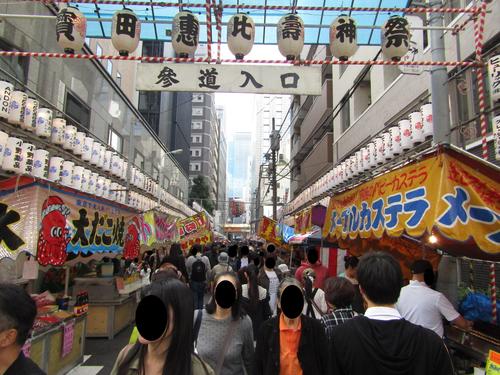
在廟會上經常能看到的攤子鱗次櫛比的情況下
人山人海的早就醃製的小攤
原本醃漬是指將淺醃製的蘿蔔在米曲子的地板上本醃製而成的,
這是從江戶時代開始食用的傳統食物。
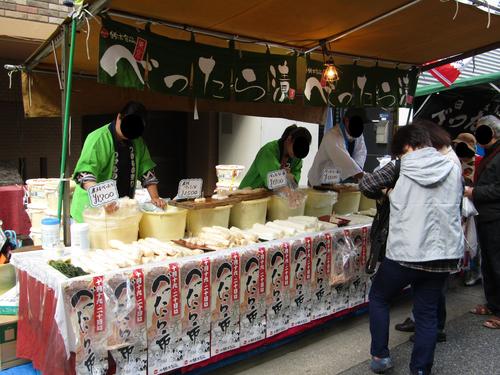
據說那個十五代將軍德川慶喜也很喜歡吃
一想到現代的我們也會說同樣的東西,就覺得很不可思議吧
因為在店裡可以試吃醃製等,所以
去多家店尋找喜歡的腌菜也很開心
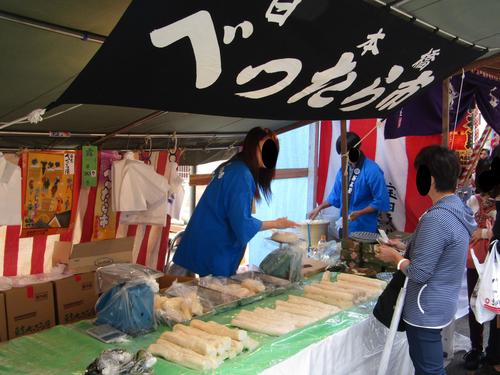
實際一邊試吃一邊去店裡看看的話,會有兩種在意的事情。
第一個是,無論哪家店都要把醃漬切好,不要裝進袋子裡。
雖說變軟了,但是一根蘿蔔就那樣帶回去很麻煩,所以
我一直在想“總覺得不親切啊 ” ”
其實不掛斷直接交給對方是有理由的
理由是“黏糊糊的是吉祥物,所以不切”。
這麼說來,帶回去雖然有點辛苦,但還是希望不要剪了!
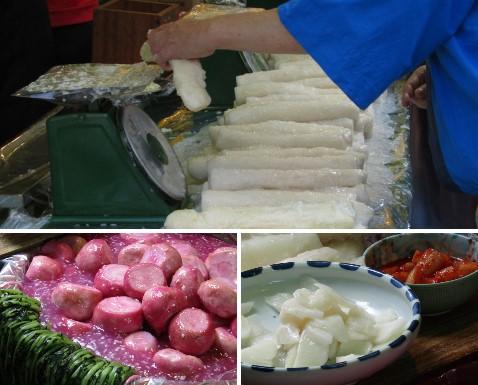
第二個是,黏糊糊的腌菜有“帶皮”和“無皮”。
正如字面意思,是有還是有皮的區別。
帶皮的人有嚼勁,有接近澤庵的口感。
據店裡的人說,從江戶時代開始就有沒有皮的人。
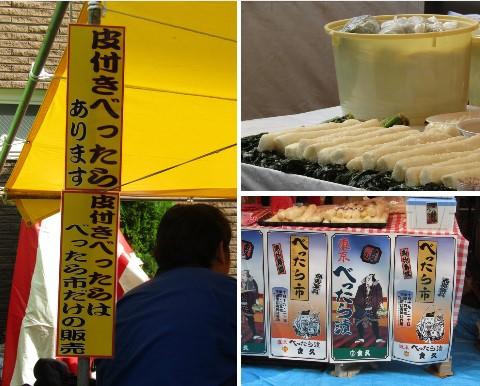
還有,大人買了醃漬的人,乘坐電車從遠處來的人都很開心的郵包服務!
買很多的時候,試著利用一下怎麼樣?
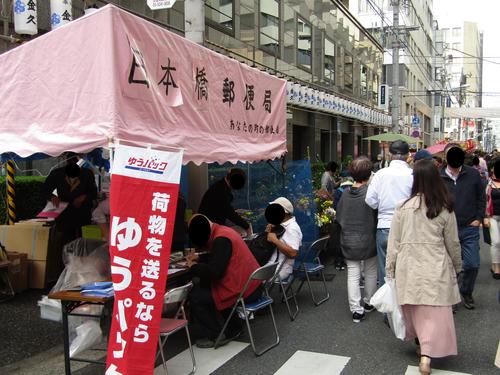
江戶時代,10月20日在寶田惠比壽神社門前有舉行惠比壽講的風俗。據說是供奉商業和農業之神惠比壽的活動,供奉吉祥物祈求生意興隆。
今天,和正月相比,只有在市舉辦的時候才能得到朱印,神社裡聚集了很多人,“當時也這麼熱鬧嗎?”一邊想著,一邊享受了當時的氛圍
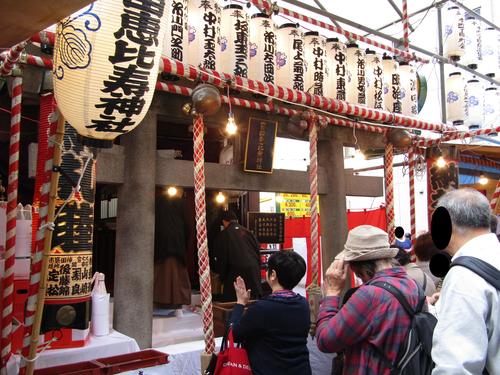
另外,從市的舉辦場所飛出來,在日本橋的街道上走一走,就會發現
在日鐵日本橋大廈遺址進行的工程圍欄中描繪的“日本橋歌留多”的“へ”
我注意到了這是有關市的內容!
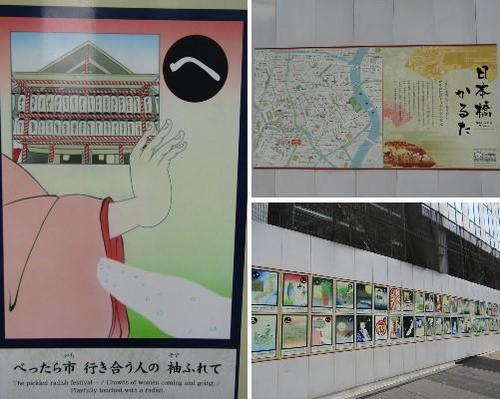
別的話,碰到市裡來的人的袖子
因為用繩子綁住了渣滓黏糊糊的蘿蔔,就隨身攜帶了
因為不小心在別人的衣服上沾上了渣滓,所以被稱為“黏糊糊糊的醃製”,是讓人想起醃製的由來的內容
對為了不弄髒和服而黏糊糊糊的女性們
江戶時代有一位男性想用面白刷刷刷刷刷刷刷。...
現代的話,在市裡(很遺憾?)雖然沒有那樣的男性,但是
今年錯過了機會的各位,明年來玩怎麼樣 ? ?
明天見
2018年10月28日12:00
秋意漸濃了。
秋天的長夜,能感受到東京150年的魅力和文化
活動在濱離宮恩賜庭園舉行。
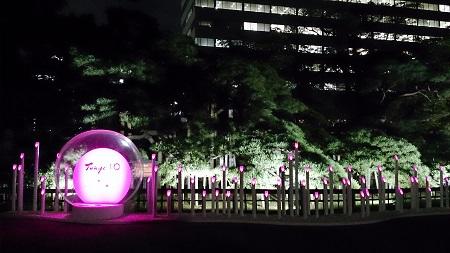
三百年的松樹被點亮,
成為絕佳的攝影地點。
在旁邊的展臺上穿越時空的照片
得到了拍攝,成為了很好的紀念。
在潮入池塘裡,設置了水螢幕。
表現時代的變遷
放映投影映射秀。
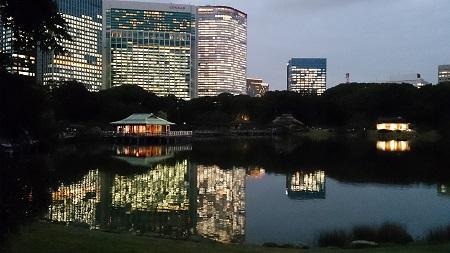
平時不公開的夜晚的浜離宮恩賜庭園。
可以欣賞映在潮入池塘水面上的夜景。
享受各種秋天的氣氛怎麼樣?
◆東京150年祭
2018年10月26日星期五-28日星期日
◆浜離宮恩賜庭園
[Hanes]
2018年10月25日09:00
你好!我是新人特派員Hanes。 
去日本橋惠比壽講的時候,順便去了一家非常熱鬧的1718年(1718年)創業的老字號江戶屋。
在這家店,正如建築物牆壁上寫的那樣,經營刷毛刷等,
在進入店內之前引人注目的就是這種獨特的外觀!
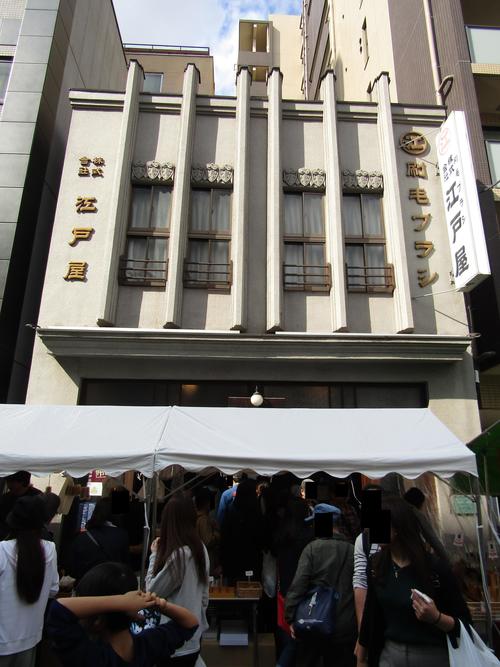
這是表現了刷子,采用了人造石洗出完成的技術的建築
這麼說來,確實很像刷子。
是被登記在國家登記有形文化遺產(建築物)的貴重建築物,
中央區觀光檢定的官方教材中也有記載
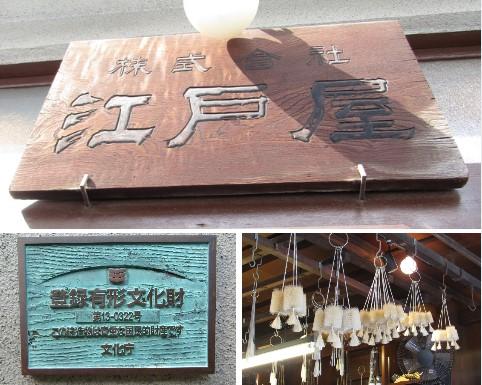
店內的天花板上掛著很多刷子和刷子,
從那裡可以窺見現代便利技術無法模仿的傳統技藝
另外,只有木造建築(1924年(1924年)建造)才有的溫暖和情趣也令人印象深刻。
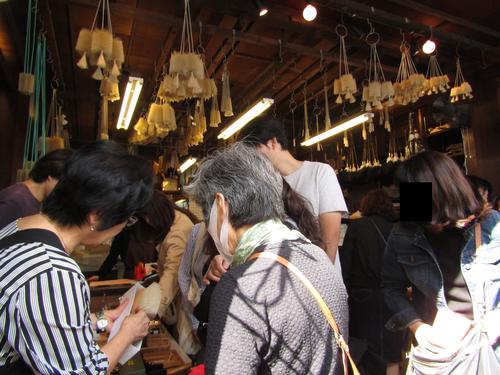
除了衣服用、鞋子用、打掃用、化妝用的刷子、牙刷、發刷之外,還有
書法用的筆、繪畫用的筆、刷子,商品種類豐富。
作為禮品和中央區特產不是也正好嗎 ? ?
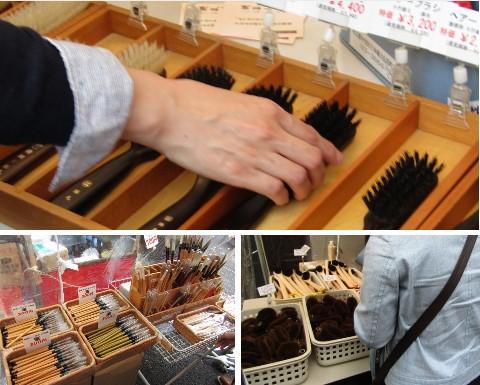
我買了一個家庭用的牙刷,該市期間比較划算的這邊的牙刷
毛刷的部分有馬毛、豬毛、普通尺寸和大尺寸。
因為和看慣了的透明和白色的刷子不同,而且在其他地方也很難看到,所以
不經意間就想嘗試一下怎樣的磨練感覺嗎?
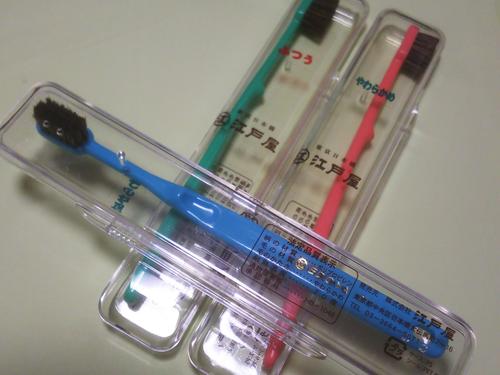
店裡的人說,在使用的時候毛會慢慢變短,
據說有3~4個月,長的話有半年!
另外,“軟め”也可以用於牙齦按摩
從七代將軍家繼時代成為將軍家的刷毛師的初代利兵衛開始的這家店,今年創業300年!
那個極好的傳統和技術,是想傳承給未來的寶物啊
■江戶屋
地址:東京都中央區日本橋大傳馬町2號16號
營業時間:9點~17點
定休日週末和節假日
網站:http://www.nihonbashi-edoya.co.jp/
※本報導得到了江戶屋的負責人的刊登許可。
[Zymini☆板球]
2018年10月22日14:00
在明石町的中央區保健所等複合設施的6樓,中央區立鄉土天文館“時間圓頂明石”,舉辦了“第19屆特別展東京150年紀念中央區的西洋醫學事始”
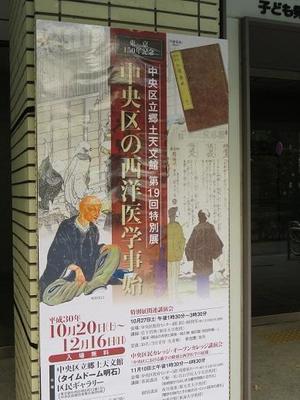
舉辦時間是10月20日(週六)到12月16日(週日)。
從星期二到星期五,時間是上午10點到下午7點
星期六和星期天是上午10點到下午5點。
每周星期一是閉館日。
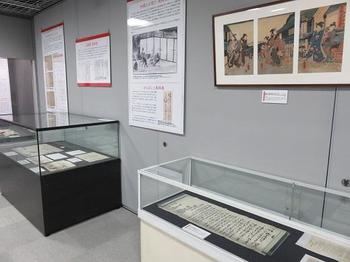
看了會場的展品,可以深切地感受到江戶、幕府末期、明治時代,這個中央區正是西洋醫學的據點。
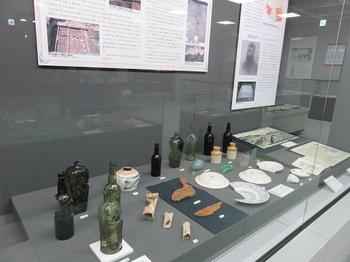
江戶時代,日本橋本石町三丁目(現在的日本橋室町四丁目)有荷蘭商館長滯留的長崎屋,逗留期間在同行的館醫身邊有很多人為了尋求會面而來訪進行資訊交換,在閉關鎖國政策下的日本,這裡是和西洋文明(西洋醫學)為數不多的交流場所當然了
下面的照片 是位於日本橋室町四丁目的長崎屋遺址的說明板 是位於日本橋室町四丁目的長崎屋遺址的說明板
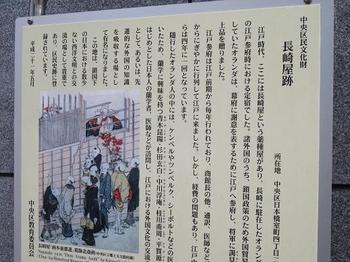
在築地七丁目的黎明公園裡,有和商館長一起在長崎屋停留過的西博爾德的像
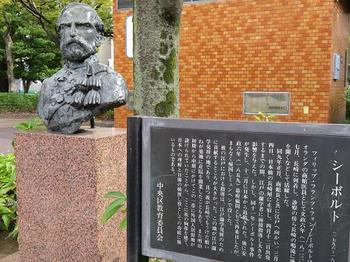
西博爾德和中央區的關係,在他的女兒伊奈開了產院是築地的地方也有。
在特別展,還介紹了西博爾德和西博爾德的女兒楠本稻子。
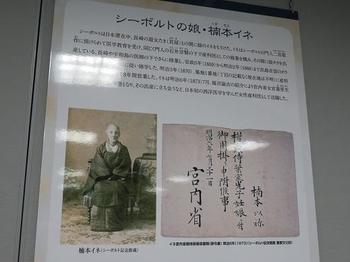
中央區還有“解體新書的紀念碑”,這是因為在築地的中津藩中宅邸,藩醫前野良澤翻譯了“解體新書”。
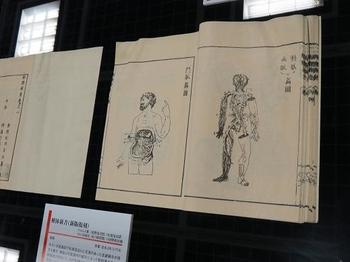
另外,桂川甫周每次和參府江戶的荷蘭商館長一行對話。
蘭方醫桂川家自第一代侍奉第六代將軍德川家宣以來,世世代代擔任幕府的奧醫師。 
甫周是四代,宅邸遺址在築地一丁目
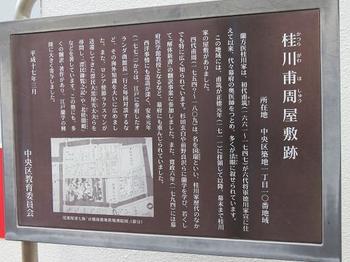
甫周向杉田玄白、前野良澤等人學習蘭學,年紀輕輕就參加了《解體新書》的翻譯工作。
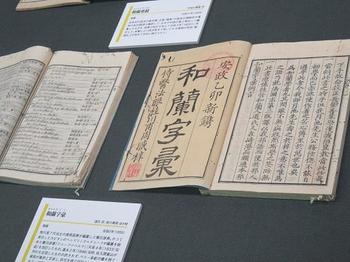
從幕末到明治時期,隨著蘭學的興盛和西洋醫學流入築地居留地,中央區正是西洋醫學的據點。
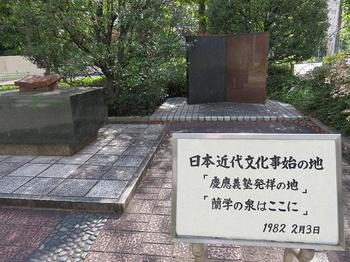
在這次的特別展,展示了很多能了解“中央區西洋醫學始”的資料。
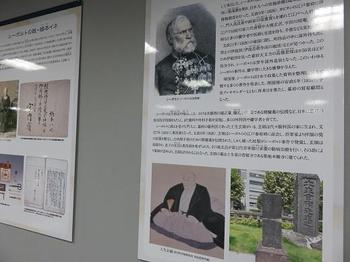
10月27日(星期六)預定舉行特別演講會。
講師是東洋大學教授岩下哲典,
主題是“幕府末期、明治的洋學和築地桂川家、福澤塾、岸田吟香”。
時間是下午1點30分到3點30分。
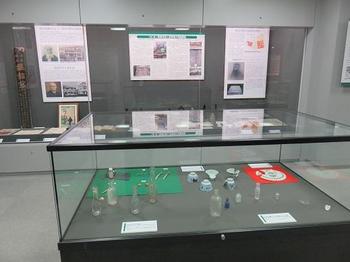
另外,關於會場的攝影 和採訪,得到了大家的諒解。 和採訪,得到了大家的諒解。
今年8月,在該館舉辦的“歡欣雀躍的恐龍樂園”的介紹報導如下 ⇒
/archive/2018/08/post-5453.html
     
[Zymini☆板球]
2018年10月21日12:00
所謂“燈火親近之候”,是指秋天 的夜晚 的夜晚 既涼爽又長,適合在燈光 既涼爽又長,適合在燈光 下讀書 下讀書 ,據說是這樣的季節,但是現在理所當然的明亮的燈火, ,據說是這樣的季節,但是現在理所當然的明亮的燈火, 也不是很久以前就有的事了,讓人想起歷史的痕跡,在銀座2丁目的十字路口 也不是很久以前就有的事了,讓人想起歷史的痕跡,在銀座2丁目的十字路口 有 有
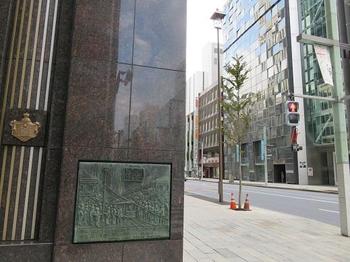
銀座2丁目十字路口 的拐角處,卡地亞大廈的牆壁(銀座Malonie大道側)上鑲嵌著電燈柱紀念碑的板子 的拐角處,卡地亞大廈的牆壁(銀座Malonie大道側)上鑲嵌著電燈柱紀念碑的板子
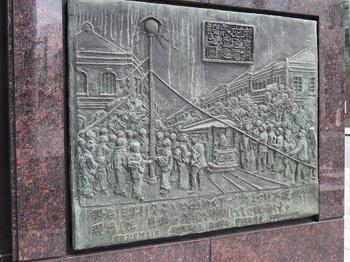
1882年,電弧燈代替了一直以來主流的煤氣燈和燈,在日本首次亮起。
在那座紀念碑上,板塊上描繪了很多人聚集在明亮的燈光上仰望的樣子。因為太亮了,很多人都很吃驚
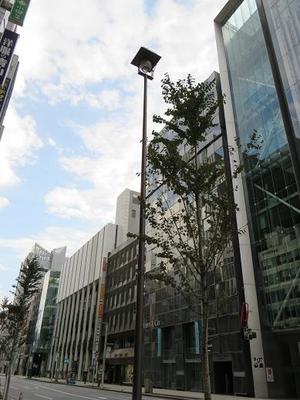
另外,在這個十字路口 的卡地亞大廈前,中央路一側,為了紀念“日本最初的電氣路燈建設地”,相關人員於1956年10月1日建造了銀座紀念燈。 的卡地亞大廈前,中央路一側,為了紀念“日本最初的電氣路燈建設地”,相關人員於1956年10月1日建造了銀座紀念燈。
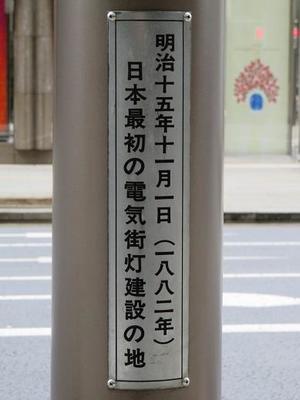
之後,這個紀念燈經過多次改建,現在的燈是前年9月復原的
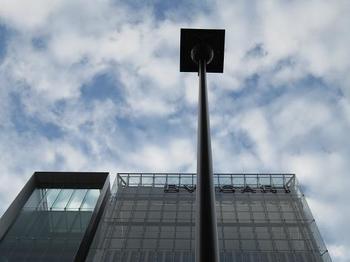
感謝先人的努力,在親近燈光 的時候, 的時候, 努力 努力 學習讀書吧 學習讀書吧
        
[Hanes]
2018年10月19日18:00
你好!我是新人特派員Hanes。
到了10月中旬,中央區內街道樹的楓樹和藤楓樹是否會紅葉,
上班途中開始檢查了
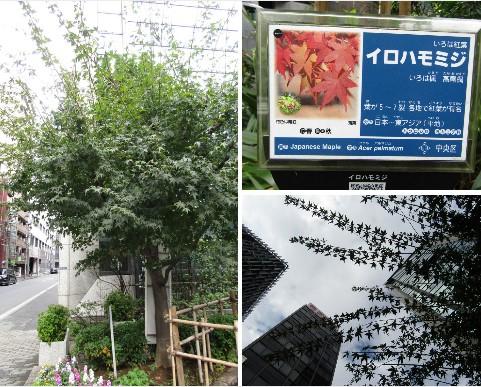
(江戶・紅葉大道:日本橋一丁目18番~日本橋三丁目15番)

(交訊社通)
看來紅葉還差得遠,
根據中央區網站“中央區管理的街道樹”,
京橋地區有36個,日本橋地區有47個,月島地區有0個楓樹,
據說京橋地區種植了254株,日本橋地區種植了127株,月島地區種植了103株辣椒楓。
因為紅葉很美,所以這些都是全國所有城市的街道樹。
在這樣的中央區還有一個關於“楓葉”的東西。
那就是楓川。
中央區既有像隅田川和日本橋川那樣現存的河流,也有很多因填埋而消失的河流。
楓川也是消失的一條河。
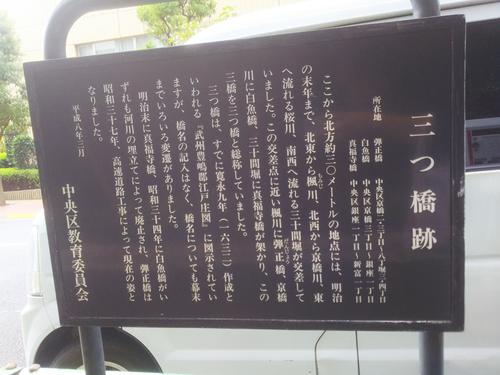
正如這邊的指示板上所說的那樣,以前在楓川上架起了彈正橋。
這件事,前輩特派員吉米☆板球先生也介紹過。(詳情請參閱相關文章)
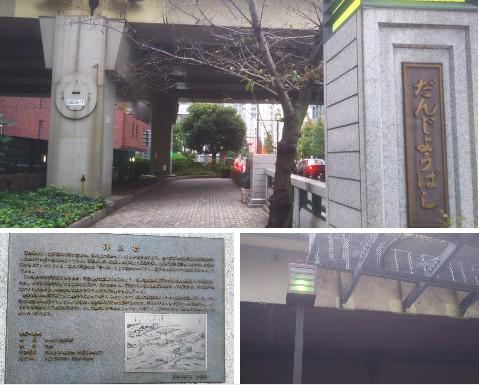
(現在的彈正橋。架設於1926年,位於比以往的彈正橋稍北側。)
這座橋在寬永圖、承應圖、明歷圖中作為無名橋。
1700年(1700年)的圖上記載了由來不明的“とごえし”(戶越橋),之後八丁堀有邸宅的島田彈正少弼成為了源自彈正橋。
1913年(1913年)的市區改正事業整備了街道網,在那座橋的上游架設了新的彈正橋,同時舊彈正橋被改名為原彈正橋並繼續存在,但是由於震災復興事業的區劃整理而成為了廢橋。
但是,這座橋是根據東京府的委託在工部省赤羽製作所製造的我國最初的國產橋梁,所以
東京市於1929年(1929年)5月決定在富岡1丁目作為八幡橋進行改建和保存
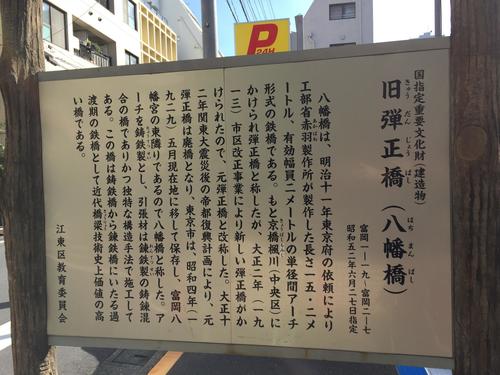
因此,去富岡八幡宮的時候,穿過了舊彈正橋。
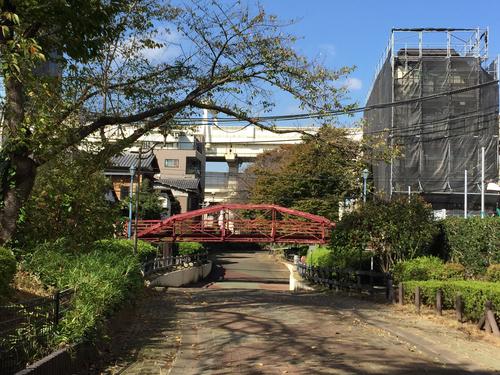
這座橋實際上也是東京最古老的日本現存鐵橋!
順便說一下,日本最古老的是大阪府大阪市的綠地西橋(舊心齋橋)。
這些在一般社團法人日本橋梁建設協會“100年橋梁:連結下一代的可靠技術”(p.17)中有介紹。
另外,只有在官營工廠首次建造的橋才有的,帶有反映國家威信的菊花徽章的別針也很有特徵
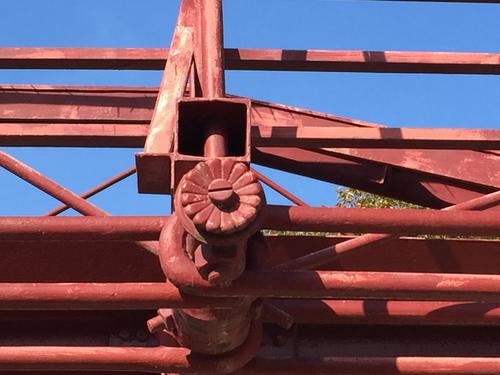
並且,作為從鑄鐵橋到煉鐵橋的過渡期的鐵橋,是近代橋梁史上珍貴的橋,
由於以美國人斯奎爾・維普爾的專利為基礎的維普爾型桁架橋的名譽,1989年從美國土木學會獲得了“土木學會榮譽獎”。
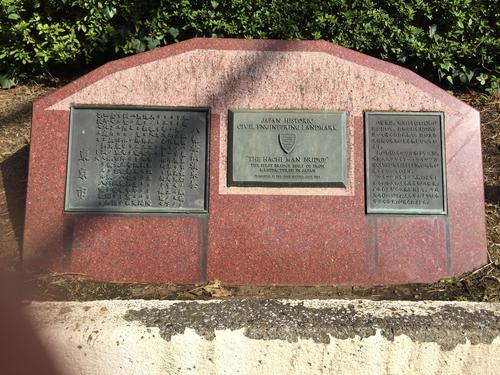
可以說是文明開化象徵的舊彈正橋...
在稍微伸手的地方,我了解了那個深奧的歷史。
一座橋非常有趣!在充滿歷史的中央區,每天都是連續發現的!
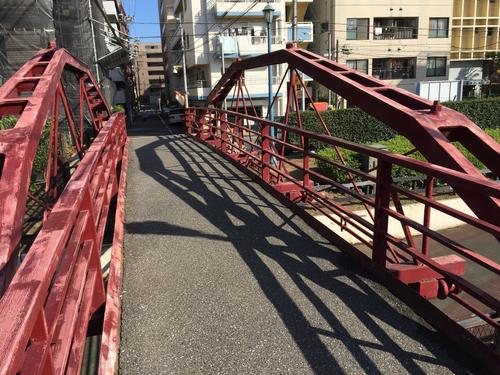
【相關報導】
吉米☆板球“走在楓川跡(1)”
/archive/2018/06/post-5299.html
吉米☆板球“走在楓川遺跡(2)”
/archive/2018/06/post-5303.html
【參考文獻】
東京都中央區教育委員會社會課文化財產系《中央區文化財產調查報告書第5集中央區的橋梁·橋詰廣場-中央區近代橋梁調查-》(東京都中央區教育委員會社會課文化財產系,1998年).
【參考網站】
一般社團法人日本橋梁建設協會“100年橋梁:連結下一代的可靠技術”
http://www.jasbc.or.jp/panfuretto/panfu_100year_201505.pdf
國立國會圖書館“國立國會圖書館數字收藏”江戶切繪圖築地八町堀日本橋南繪圖
http://dl.ndl.go.jp/info:ndljp/pid/1286660?tocOpened=1
文化廳“文化遺產線上”
http://bunka.nii.ac.jp/heritages/detail/121364
|
鏈接集
|
![]()
![]()
![]()

![]()

![]()
![]()

![]() ”
”![]()



![]()


![]()
![]() ?
?

































